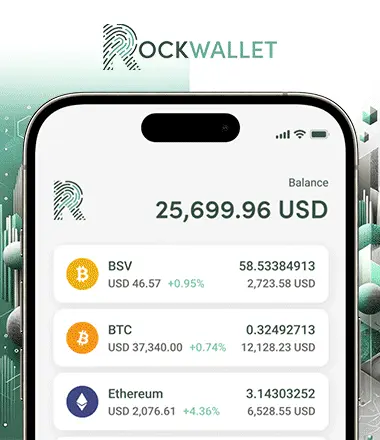The growing popularity of cryptocurrencies has aroused mainstream interest in blockchain technologies and their possibilities. Increasingly, blockchain is used as a generic term that most people associate with Bitcoin, the cryptocurrency created using the technology. The potential and scope of the application of decentralized protocols have already become so much broader.
Table of Contents
- Blockchain Definition
- History of Bitcoin
- How the Bitcoin Blockchain Works
- Proof-of-Work Protocol
- How to Understand the Bitcoin Blockchain
- Practical Use Cases
- Value Proposition
- FAQs
Blockchain Definition
The Bitcoin blockchain is a global distributed ledger consisting of data blocks sequentially linked in a chain. Each block contains information about the preceding block. The data of blocks is copied and stored on different Bitcoin mining nodes without being bound to one specific server, making the substitution of records impossible.
A permanently locked set of rules or “Protocols” governs the flow of data through the distributed network of nodes.
The History of Bitcoin
On October 31st, 2008, Satoshi Nakamoto, released the whitepaper titled Bitcoin: A Peer to Peer Electronic Cash System. This paper introduced the first widely adopted use case for blockchain’s innovative protocols to the world. As mentioned before, Bitcoin is but one element of blockchain, i.e., blockchain is to Bitcoin, what the internet is to email.
Anyone who understands the basics of programming can create an application on top of the Bitcoin blockchain.
Novelty & Advantages
In centralized systems, there exists a single entity, like a ruler, who has overriding control over all matters on the platform. If the ruler is manipulated or corrupted, there is little recourse other than leaving that platform entirely.
The Bitcoin Blockchain is distributed and maintained by multiple interconnected parties, so participants in the network do not need to trust just one person or company to have an accurate copy of the ledger. The framework is permanent and driven by a consensus mechanism so that there is no single source for making decisions. The Bitcoin Blockchain was designed to scale to hold high volumes of payment transactions and other forms of data to support enterprise applications.
The Bitcoin Blockchain’s unique characteristics stem from merging cryptography and transparency within a distributed technological framework. Bitcoin transactions between two parties occur within a global peer-to-peer network without needing to rely on third-party authentication.
Blockchain technology tackles the problem of digital trust by securely recording important information in a public space. Data stored on the blockchain exists in a shared and continually reconciled state. The data is decentralized, can be encrypted, and timestamped. It cannot be tampered with or changed retrospectively.
How the Bitcoin Blockchain Works
Users’ Viewpoint
Users broadcast transactions onto the Bitcoin (BSV) network. The broadcast can store any form of data onto the blockchain. When the request arrives on the Bitcoin (BSV) network, it is validated then added to a pool of pending transactions. The digital signature authenticates its security and authenticity, making it difficult to see a scenario wherein a bad actor could cause fraud and introduce problems. You could technically send/sign a transaction that is fraud, but the proof that you did it is the signature itself. The signature would deter those from committing fraud in the first place.
Groups of individual transactions from the pool form a cryptographically protected block. Miners compete for the right to add new blocks (on average, every 10 minutes) to the blockchain.
Miners’ Viewpoint
Blockchain protocols work by organizing data into a block, which is timestamped and secured by strict cryptographic rules. Blocks are then chained together and arranged chronologically, forming a sequential blockchain. Each new block stores a list of the previous block’s confirmed transactions. Each node on the network maintains a copy of the blockchain’s data.
Miners provide the computational investment to maintain and secure the network through a proof-of-work consensus mechanism. The miners compete with each other to gather as many transactions as possible and then show every other miner the solution. They don’t necessarily work together initially – but end up doing so since as soon as a block as found and it is OK. Miners want to accept it and move on to the next one quickly in hopes of finding the next reward. Common data history is available for all the network participants to help avoid duplicate entries and ensures all participants have the latest version.
Proof-of-Work Protocol
Proof-of-work (PoW) is the protocol used by a miner wishing to validate transactions and keep the network secure. Miners have to waste energy by resolving complex computational problems to validate new blocks. The first miner to solve the math problem and get the block out to the other miners wins. This is how the double spending problem is prevented. Miners won’t accept a block containing double spends, therefore the miner who won the block would have it rejected thus not get the reward. A completed block gets a unique timestamp and hash.
Updates on existing copies of the blockchain go out to all the nodes on the network. If there is an attempt to alter an earlier created block, the hash encoded in the next block will no longer match up. All nodes have a copy of the entire blockchain so they can detect any tampering. When the hashes match up across the chain, all parties know that they can trust their records.
How to Understand the Bitcoin (BSV) Blockchain
Time needed: 5 minutes
How to Understand the Bitcoin (BSV) Blockchain
- Bitcoin (BSV) users conduct business and broadcast transactions onto the network.
Individuals conduct business and agree to a Bitcoin (BSV) transaction. A user broadcasts the transaction on the to Bitcoin (BSV) network.
- The transaction is validated and added to a pool of pending transactions.
When the request arrives on the Bitcoin (BSV) network, it is validated then added to a pool of pending transactions. The digital signature authenticates its security and authenticity, making it difficult to see a scenario wherein a bad actor could cause fraud and introduce problems.
- Groups of individual transactions from the pending pool form a protected block.
Groups of individual transactions from the pool form a cryptographically protected block. Miners compete for the right to add new blocks (on average, every 10 minutes) to the blockchain.
- Bitcoin (BSV) miners compete for the right to add new blocks to the blockchain.
Blocks are chained together and arranged chronologically, forming a sequential blockchain. The miners compete with each other to gather as many transactions as possible and then show every other miner the solution. Each solution represents the transfer of Bitcoin (BSV) from one user to another.
- Proof-of-Work (PoW) protocol ensures trustworthy transactions and avoids the doubles pending problem.
Proof-of-work (PoW) is the protocol used by a miner wishing to validate transactions and keep the network secure. The first miner to solve the cryptographic problem and get the block out to the other miners wins. This is how the double spending problem is prevented. A completed block gets a unique timestamp and hash.
Practical Use Cases
Satoshi conceived Bitcoin as a permissionless, P2P financial network. Bitcoin set a precedent for all cryptocurrencies. As such, Bitcoin (BSV) allows users to transact freely with one another based on the belief that users can be the owners of their data.
Data gets stored publicly and is signed. The signing of the transaction demonstrates possession while thorough encryption satisfies the accessibility requirement.
The applications of the blockchain technology extend far beyond cryptocurrency and money transfer and are useful for a host of other applications, across many different industries. Cryptographic keys even allow for the transfer of new control rights and a basis to form new digital relationships.
The blockchain technology offers new methods for authentication and authorization. Smart contracts on the blockchain define the rules and penalties around a specific agreement in the same manner as a traditional contract. The smart contracts automatically enforce the obligations. The algorithm for the automatic fulfillment of specified conditions is significant for solving legal issues in any field, from commerce to manufacturing.
Value Proposition
The lack of necessity for a central authority makes Bitcoin (BSV) blockchain an ideal ledger and peer-to-peer (P2P) settlement solution. It removes the need for clearinghouses and other settlement agents, while generally reducing costs and improving the speed at which transactions can be made, verified, settled, and recorded. Because the Bitcoin (BSV) blockchain technology is not centralized, if one part of it went down, the whole network would not collapse.
Another advantage of the Bitcoin (BSV) blockchain is that it is tamper-proof. Each block added onto the chain carries a firm, cryptographic reference to the previous block. Overall, the Bitcoin (BSV) blockchain’s decentralized, open, and cryptographic nature allows users to trust each other and transact peer-to-peer, making the need for intermediaries obsolete.
Now that you have a better understanding of Blockchain technology, it’s time to learn about what is Bitcoin.
Blockchain FAQs
The Bitcoin blockchain is a global distributed ledger consisting of data blocks sequentially linked in a chain. Each block contains information about the preceding block. The data of blocks is copied and stored on different Bitcoin mining nodes without being bound to one specific server.
The biggest advantage of blockchain technology is that it is decentralized. The Bitcoin Blockchain is distributed and maintained by multiple interconnected parties. The framework is permanent and driven by a consensus mechanism.
Blockchain technology tackles the problem of digital trust by securely recording important information in a public space. Data stored on the blockchain exists in a shared and continually reconciled state.
Users broadcast transactions onto the Bitcoin (BSV) network. The broadcast can store any form of data onto the blockchain. When the request arrives on the Bitcoin (BSV) network, it is validated then added to a pool of pending transactions.
Miners provide the computational investment to maintain and secure the network through a proof-of-work consensus mechanism.
Proof-of-work (PoW) is the protocol used by a miner wishing to validate transactions and keep the network secure. The first miner to solve the math problem and gets the block out to the other miners wins.
The lack of necessity for a central authority makes Bitcoin (BSV) blockchain an ideal ledger and peer-to-peer (P2P) settlement solution. It removes the need for clearinghouses and other settlement agents, while improving the speed at which transactions can be made, verified, settled, and recorded.

 07-02-2025
07-02-2025 



